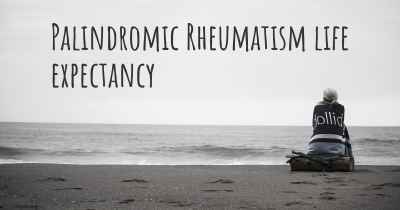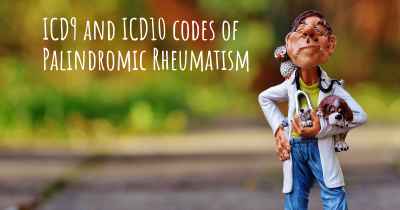Which are the symptoms of Palindromic Rheumatism?
See the worst symptoms of affected by Palindromic Rheumatism here

Palindromic Rheumatism (PR) is a rare form of inflammatory arthritis that is characterized by recurrent episodes of joint inflammation. It is often considered a precursor to rheumatoid arthritis (RA) and shares some similarities with it. PR is named after the intermittent nature of its symptoms, which come and go in a palindromic pattern, meaning they appear and then disappear, only to reoccur again.
Symptoms:
The symptoms of Palindromic Rheumatism can vary from person to person, and the severity and frequency of episodes can also differ. The most common symptoms include:
- Joint Pain: PR primarily affects the joints, causing pain and tenderness. The pain is usually sudden and can occur in any joint, but it most commonly affects the hands, wrists, knees, and ankles.
- Joint Swelling: Inflammation of the joints is a hallmark of PR. Swelling can be localized to a single joint or involve multiple joints simultaneously.
- Joint Stiffness: Stiffness is a common symptom experienced by individuals with PR. Affected joints may feel stiff, especially after periods of rest or inactivity.
- Redness and Warmth: During episodes of joint inflammation, the affected joints may appear red and feel warm to the touch.
- Episodic Nature: The defining characteristic of PR is its episodic nature. Symptoms typically last for a few hours to a few days before spontaneously resolving. The frequency of episodes can vary greatly, with some individuals experiencing them several times a month and others having longer intervals between episodes.
- Systemic Symptoms: In addition to joint-related symptoms, some individuals with PR may experience systemic symptoms such as fatigue, malaise, and low-grade fever during episodes of inflammation.
It is important to note that during symptom-free periods, individuals with PR may have no signs of joint inflammation or any other symptoms. This makes the diagnosis of PR challenging, as the symptoms may not be present during medical evaluations.
Diagnosis:
Diagnosing Palindromic Rheumatism can be difficult due to its intermittent nature and the absence of specific diagnostic tests for the condition. The diagnosis is usually made based on the individual's medical history, symptoms, and exclusion of other conditions. A rheumatologist, a specialist in arthritis and related conditions, will typically evaluate the patient and may order various tests to rule out other forms of arthritis.
Treatment:
As PR is an unpredictable condition with no known cure, treatment primarily focuses on managing symptoms and preventing or delaying the progression to rheumatoid arthritis. The treatment approach may involve:
- Nonsteroidal Anti-Inflammatory Drugs (NSAIDs): These medications can help reduce pain and inflammation during episodes of joint inflammation.
- Disease-Modifying Antirheumatic Drugs (DMARDs): In some cases, DMARDs may be prescribed to control inflammation and prevent joint damage. Methotrexate is a commonly used DMARD in PR.
- Steroid Injections: Corticosteroid injections into the affected joints can provide rapid relief from inflammation and pain.
- Lifestyle Modifications: Making certain lifestyle changes, such as regular exercise, maintaining a healthy weight, and avoiding triggers like stress and certain foods, may help manage symptoms and reduce the frequency of episodes.
It is important for individuals with PR to work closely with their healthcare team to develop an individualized treatment plan that addresses their specific needs and goals.
Conclusion:
Palindromic Rheumatism is a rare form of inflammatory arthritis characterized by recurrent episodes of joint inflammation. The symptoms, including joint pain, swelling, stiffness, redness, and warmth, occur in an episodic pattern. Diagnosis can be challenging due to the intermittent nature of the condition, and treatment primarily focuses on symptom management and preventing the progression to rheumatoid arthritis. If you suspect you may have PR, it is important to consult with a rheumatologist for an accurate diagnosis and appropriate management.
Posted Sep 6, 2017 by Sarah 1150
Persons may also have other systems such as swelling, redness, soreness, stiffness, fatigue, etc. These vary from person to person as well as from more mild to severe instances of the condition.
Posted Dec 1, 2019 by MaddOryxite 3570








